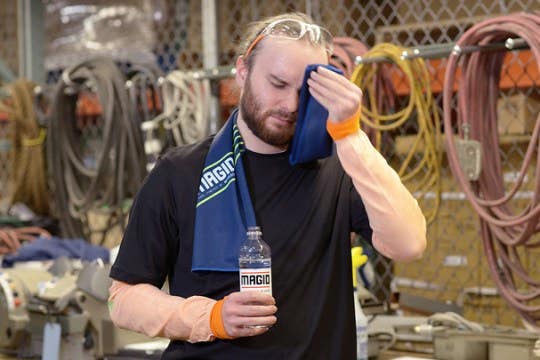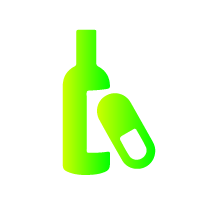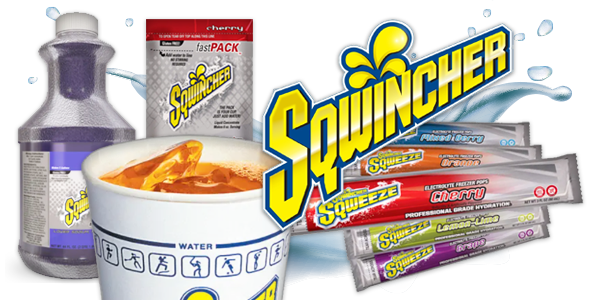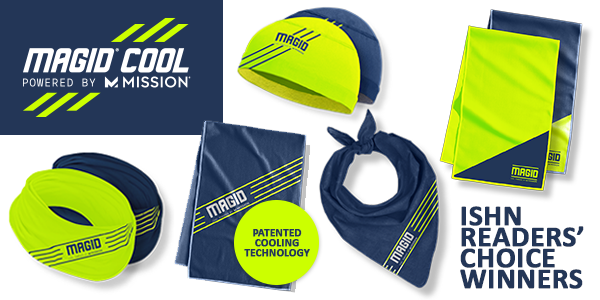
8 Simple Steps to Prevent Heat Stress on the Job
By John Heniff, Safety Writer, Magid
Heat safety is a problem that’s likely to play a bigger part than ever in your day-to-day work as time goes on. In the past, comprehensive guidelines for keeping workers safe in the heat have been scarce, leaving many safety managers unsure where to begin. But in 2021, experts at the Heat Safety & Performance Coalition (HSPC) (formerly the National Heat Safety Coalition) published a consensus document with key steps that you can use to keep your workers safe. Here are 8 subjects to think about when putting together your heat illness prevention strategy!


1. HEAT HYGIENE
Before they even set foot on the jobsite, heat hygiene education can teach workers the basics of how to stay safe. Show safety training presentations and place safety reminder posters around your workplace to explain the signs, symptoms, and risks of heat illness as well as emergency actions to take if they see a worker in trouble.
In addition to general heat hygiene education, be sure to organize your daily job schedule to account for changing environmental specifics. Provide day-to-day or hour-to-hour jobsite temperature updates in hot conditions so work teams can perform health status checks and be aware of any personal risk factors. You can also pair-up workers or supervisors to create a buddy system where they keep an eye on each other and remind each other to hydrate throughout the day.


2. HYDRATION
Providing hydration solutions for your workers is important. But if the water or electrolyte-replacing beverages are warm, unpalatable, or located far away from the jobsite, your workers won’t want to rehydrate. On top of that, if your teams are working to the point of over-exertion on extremely hot and humid days, they can produce more heat internally than they are losing. In these situations, they can be hydrating and still suffer a potentially deadly heat stroke because of the exertion combined with outside temperatures. You can keep your crew hydrated and help prevent core body temperatures from rising too high by providing cool water and/or electrolyte-replacing beverages within easy distance of the jobsite.


3. HEAT ACCLIMATIZATION
Over 70 percent of heat-related deaths occur during a worker’s first week in the heat. This is mostly due to their body being unprepared for working long hours in high temperatures. Get your workers’ biological defenses ready over the course of 5-7 days by slowly introducing them to the job temperature via heat acclimatization. For example, start with an hour or two in the heat on the first day before increasing the increment more and more until they are working a full shift. After the heat acclimatization process, their bodies should be able to sweat more and have a lower heart rate in hot conditions.


4. ENVIORNMENTAL MONITORING
Weather reports can provide a broad overview of the temperatures you can expect in the area. But what about your worker’s jobsite, specifically? The best way to track the temperature, humidity, wind speed, and sun exposure in a particular area is with a Wet Bulb Globe Temperature (WBGT) monitor. This monitor can help you determine the true environment of your jobsite, especially if it contains natural or manufactured elements which can block wind, amplify sunlight, or give off heat and make the area hotter.
What is microclimate?
Microclimates are a unique set of weather conditions specific to a small area that are different from the larger, surrounding area. So even if the weather report says it’s 80 degrees Fahrenheit, there are many factors that reflect and trap heat and can make your site feel a lot hotter than what the heat index lists. Microclimates can be influenced by both natural and manufactured elements to the area.


Natural
Soil, Trees, Bodies of Water


Manufactured
Cement, Asphalt, Metal, Machinery
You can determine the exact temperature of your jobsite’s microclimate with a wet bulb globe temperature monitor. A WBGT monitor gives a more accurate reading than a normal thermometer by considering multiple environmental factors such as:
- Air Temperature
- Humidity
- Heat from the Sun
- Wind Speed


5. PHYSIOLOGICAL MONITORING
Modern technology has afforded us the luxury of tracking risk factors like increased heart rate or skin temperatures through wearable gadgets and smart phone applications. You can encourage your workers to use a smartwatch or heart rate tracker to help them be aware of risk factors that can lead to heat illnesses, too.


6. BODY COOLING STATIONS
In addition to hydration, having a place where workers can escape the heat is incredibly important to help them recover. If you don’t have an already established area for cooling, start scouting the best spots in your facility or jobsite. Shady areas, cooling tents, ventilated bathroom trailers, or air-conditioned lunchrooms all make great choices. Any place that allows your people to rest in a cool environment where cold towels and rehydrating beverages can be found works!


7. EMERGENCY PREPAREDNESS
Even after putting preventative measures in place, knowing how to care for an overheated worker is crucial if your workers need to respond to potential emergencies. Have your workers practice drills and scenarios ahead of time to know what to do in serious situations. Create a hands-on hypothetical situation where a worker is “exhibiting” symptoms of heat stroke. Make sure someone pretends to call EMS as other team members put emergency cooling procedures, such as preparing a cold-water immersion tub or a tarp as a makeshift tub, into action.


8. BODY COOLING PPE
In addition to your workers’ usual PPE, new cooling garments can lower their skin temperature without the need for soggy ice packs or slimy fabrics. Magid® Cool Powered by Mission® HydroActive™ technology cooling gear is designed to activate with water of any temperature to cool the garment as low as 30 degrees below average body temperature. It takes only seconds to activate but can last up to two full hours and can be re-activated throughout the workday as needed. This way, your workers can keep their cool even while working.
KNOW THE CAUSES OF HEAT ILLNESS
Overheating can be caused by several factors - alone or in combination.


Hot & Humid Environments
The most obvious cause of overheating is working in a hot environment. That might mean construction workers in the summer months, welders in the forge any time of year, or even workers whose job brings them close to hot machinery. Always be aware of the heat factor when you consider the day’s working conditions.


Heavy Exertional Activities
Over the course of a work shift, repetitive motions, carrying heavy equipment, and rough industrial tasks increase core body temperature, deplete energy, and increase the need for fluids.


Medication & Alcohol
Certain medications and even recent alcohol consumption can make workers more susceptible to heat illness. Common medicines for blood pressure, depression, and even colds and allergies can make them less able to regulate their body temperature and hydration levels.
While you might not specifically ask people if they’re taking medication or if they had a drink with last night’s dinner, you can give them a general heads-up to be aware of their own risk factors.


Dehydration
For many of the reasons we’ve mentioned here, workers often arrive for the day already dehydrated. Hot working conditions only contribute to this problem and rob workers of the fluids they need. It’s important to note that, while this is a key factor in keeping workers safe, hydration alone does NOT prevent heat illness.


Underlying Health Conditions
If your workers have previously experienced a heat illness or live with a chronic health condition like diabetes, obesity, or high blood pressure, these kinds of conditions can negatively impact the way their body cools itself down. Even if you can’t ask them directly about their medical history, it’s a good idea to issue a general reminder before your team starts working in the heat.


Heavy PPE
Remind workers whose jobs require sleeves, jackets, coveralls, or any other PPE that tends to trap heat against the body to keep a particular eye on their hydration and any signs of heat illness. You can also provide your workers lighter-weight PPE solutions including gloves, sleeves, jackets, and chaps that will offer them protection while reducing the potential for heat stress. Consider using the cooling PPE mentioned in the Provide Quality Body-Cooling PPE section below.


Working in Direct Sunlight
Even on a relatively mild day, working in the open with no shaded areas means your workers are at serious risk for continual heat stress build-up. So in addition to thinking about the temperature, be sure to increase shaded rest breaks on sunny days and provide shade wherever possible throughout the workday.


Heavy Machinery
Heavy machinery can make your worker’s jobs easier, but it can also quickly heat up the surrounding area! This is due to both environmental elements like trees and vegetation and manufactured elements like walls and ceilings that can reflect and trap heat. These hot spots, or “microclimates,” can make a seemingly mild day more dangerous than you think. Read on for advice on finding and measuring these areas to keep your workers safer.


Confined Spaces
According to the US Department of Labor, approximately 92 workers die in confined space-related incidents every year. Workers in enclosed work areas can spend long periods of time in extreme temperatures with poor air quality, putting them at heightened risk for increasing their internal body temperature and developing heat illnesses. Utilize body cooling gear and be sure to train workers in confined space safety.


Get a complete heat safety toolkit FREE including a step-by-step guide, safety reminder posters, downloadable training, and more!





